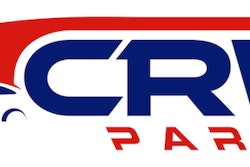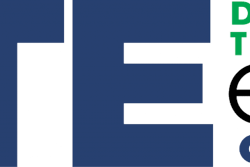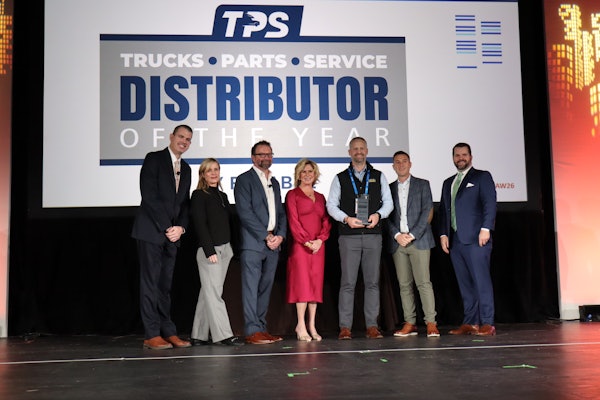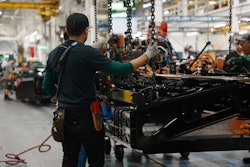The following comes from the July 2018 issue of Truck Parts & Service.
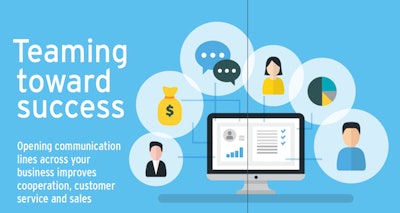
Aftermarket distribution is an industry afflicted with sameness.
Most products stocked in a distributor’s warehouse in western Canada can be found in another distribution facility in central Florida. The brake and wheel end repairs being done today in San Diego are the same jobs being completed in Halifax, Nova Scotia.
There are unique needs and products here and there — typically across duty cycles — but on the whole, the parts and service found in the aftermarket channel is overwhelmingly homogeneous. And it is specifically because of these similarities that so many aftermarket distributors eagerly search for ways to be different. Like the general population with a gallon of milk, a commercial truck owner can buy a brake drum just about anywhere in the aftermarket.
For distributors uninterested or unwilling to differentiate themselves through price cuts, exclusivity and uniqueness are best established through customer service.
Nailing customer service is no easy task. Consistency is imperative. A distributor that chooses to hang its hat on customer service must be confident its entire team is capable of providing the level of service it promises its customer base. Within a sales team, this means ensuring a customer receives an identical experience regardless of the employee with whom he is interacting.
A customer request at one facility must be handled identically across all locations, and when an outside salesperson receives a customer order and directs the customer to a nearby facility for pickup, that salesperson needs reassurance his teammates will be as informed and prepared to serve that customer as he was.
Pulling that off requires open lines of communication. From the top down and throughout a distribution business, customer-facing employees must have the training, tools and autonomy to communicate corporate strategies and pertinent customer information at all times.
For distributors eager to streamline their messaging and amp up their customer service, there are several ways communication within a sales team can be enhanced.
Cultivate employee relationships
Like any team, employees work best together when they are familiar with one another.
Distributors focused on customer service as a differentiator should take time to create and foster relationships between their outside and inside salespeople so both groups can seamlessly communicate customer requests and needs. This is especially valuable for outside employees who are reliant on in-store associates to fulfill customer orders taken in the field, but may spend little time directly interacting with those colleagues during the day.
One of the easiest ways to cultivate relationships between a sales team is scheduled on-site meetings. While these meetings can be scheduled specifically for team-building, it is not required. Regular meetings to discuss new products or quarterly sales goals also can double as team-building experiences, so long as all employees are brought together and encouraged to interact and share knowledge, says Ian Coburn, president at GPA Training.
Due to its large footprint across Canada, Fort Garry Industries uses regional rather than national sales meetings as its preferred method for communicating company and product information, says Dave Cannon, senior manager of business development. Cannon says the “sharing of knowledge” at these regional meetings is one of the most overlooked benefits of each event.
“It’s something you really see around the tables at our meetings,” he says. “Once everyone is together, you can get those conversations going where everyone starts sharing what they are doing that’s working for them and enabling them to be more effective.”
But company meetings aren’t only valuable because of their conduciveness for revealing best practices. For large distributors like Fort Garry, on-site meetings also are sometimes the only opportunities employees get the chance to meet and interact face-to-face. Relationships between employees successfully developed over email or phone are wonderful, but it’s no secret that bonds are formed faster through personal interaction.
It’s why Mike Cueto was such a fan of team-building exercises in his prior role at Velocity Vehicle Group (VVG).
“I recommend to any distributor who can [alter] their sales meetings to make sure those meetings are not just product training events,” says Cueto, who since retiring from VVG has founded Heavy Duty Training & Consulting, an aftermarket sales leadership and management firm. “Product training is important, but it shouldn’t be everything. You need more than just product knowledge to be successful.”
When he scheduled regional and corporate sales meetings in his prior role, Cueto says he would always include time within an event itinerary for networking and team-building activities.
The benefits, he says, were obvious. By enabling employees from different departments and locations to spend time together in a non-business setting, they would inevitably form bonds that would remain in place once they returned to their respective duties. The result was a stronger, more engaged team more comfortable communicating best practices and customer information across the entire VVG network.
That additional benefit also has appeared at the GenNext and Commercial Vehicle Solutions Network (CVSN) Distributor Training Expo (DTE), says event founder and Minimizer Director of Marketing Steve Hansen.
Hansen says his initial desire in creating the DTE was rooted in his desire as an aftermarket supplier to be able to train a national sales force of frontline distributor salespeople in a single weekend. After completing the annual event for the third time in April, Hansen says his training goal is definitely being met, but the networking opportunity the DTE is providing also is becoming a huge selling point in attracting distributor attendees.
“I think the number of repeat attendees tells the story,” he says. “Attendees are coming home saying the event is a great value for them and that the networking aspect is a big part of that.”
He adds, “This is a relationship business, and relationships aren’t just about customers with employees.”
Coburn agrees, adding employee relationships also can encourage cooperation and eliminate unnecessary sales calls.
“It’s amazing how many times two salespeople will go out to a fleet and the customer will tell them, ‘Your other guy was just here,’” he says. “They didn’t communicate with each other about where they were going … they could have gone together.”
Use technology where possible
When face-to-face interaction isn’t feasible, distributors also can rely on assorted technologies to connect and strengthen employee bonds.
Video is taking off as a useful communication platform at Six Robblees’, says Sales Manager Kevin Kartman. For almost two years, Kartman says the sales management team at Six Robblees’ has been developing short video messages sent on a regular basis to its 33 outside sales representatives to convey information “that is going to be pertinent to them out in the field.”
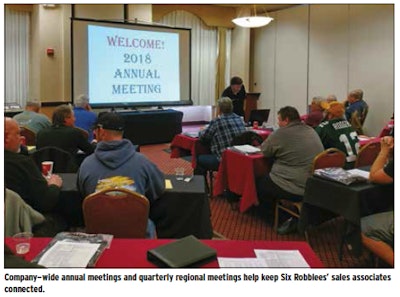
Luthe says dozens of phone calls have been replaced by a single message everyone can see. Adds Kartman, “It helps us because then everyone is working from the same playbook.”
Cannon says Fort Garry uses webinars to communicate similar training to its sales team. He says on-site training is great when possible, but incredibly time-consuming. Getting one message to everyone can take weeks. Webinars enable the company to train everyone on new tools or processes in an hour or less, regardless of their location.
The number of communication and sales tools now available to aftermarket distributors is growing. The most innovative of these new tools are customer relationship management (CRM) software programs.
Many CRMs are useful in the independent aftermarket as a repository of customer data for all employees. As salespeople interact with customers in the field, they submit their call notes to a CRM platform, which then immediately makes this information available to all other associates with access to the tool. The system works the same way from a location outward, meaning traveling salespeople can access records of a customer’s in-store purchases before entering the customer’s facility as a way to better prepare for a conversation.
With a multitude of CRM providers currently operating in North America, finding the company with the best product for a distributor’s business can take time. Luthe says Six Robblees’ has been evaluating CRM solutions for months, while Cannon says Fort Garry took the CRM plunge a few years ago and implemented sales-i after a long assessment process.
Instead of an off-the-shelf solution, VVG Vice President of Parts Sal Maldonado says his business built its own in-house CRM two years ago when it was unable to find the perfect fit.
“It was important to us that we had something that was clean and easy for our guys to use,” he says. “If they are going to be [using] it every day, we wanted it to be designed for them.”
That focus on functionality is not something to be overlooked. When relying on technology to facilitate employee communication, less is often more.
Maldonado and Cannon both attributed the ease and straightforwardness of the CRM systems they are using as reasons why the systems have been embraced by their employees.
Regarding sales-i, Alex Witcpalek, director of sales, North America, and Dominic Starr, general manager, say the product’s simplicity is by design. sales-i was developed with its users in mind.
“We know the companies who are using our product, and we know their employees are not always tech savvy,” says Witcpalek.
The duo says sales-i features all common customer data recording fields found in the most robust CRM systems, but strips out features and tools unnecessary for most distributor salespeople.
In that place, sales-i interfaces with a distributor’s business management system to display up-to-date sales data that can be used to support any customer interaction.
Starr says the data enables employees to quickly determine: “What are they buying from you? What are they not buying from you? What should they be buying from you?”
Compensating communication and teamwork
Though slightly less common than the communication methods previously mentioned, rewarding employees for cooperation in assisting customers is another way to cultivate buy-in to customer service initiatives.
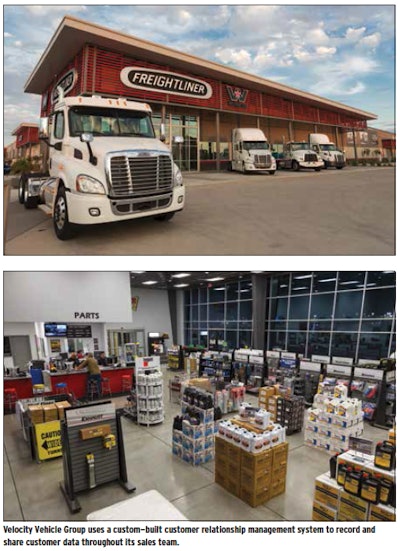
Maldonado says the tactic is still in place at VVG today.
Public commendations also can be used as a springboard for quick training opportunities. Cueto says in situations where employee efforts exceed company expectations and protocol, he encourages distributors to allow their employees to introduce their successful personal strategies company wide.
“I think sometimes employees pay better attention to their teammates than someone else because they know if [their teammates] are saying something, then it works. They know the person making the statement is living in their shoes every day,” he says.
Teamwork can be financially beneficial for employees as well. Maldonado says VVG’s commission-based sales structure encourages cooperation “all the way to the bank,” and adds the company’s leasing department also rewards employees with gift cards when they uncover a new lead in the field.
“It doesn’t matter what it amounts to,” he says. “If you pass it along, you are rewarded.”
Six Robblees’ is a believer in public recognition, too. The company uses its regular corporate email blasts and videos to praise employees for outstanding work in the field, while also presenting performance awards, gift cards and other small gifts at its annual sales meeting.
Fisher says every accolade is coveted, which not only generates employee engagement, but also provides Six Robblees’ reassurance that its customers are always receiving the customer service they deserve.
“Just knowing you are respected and appreciated goes a long way,” he says.


